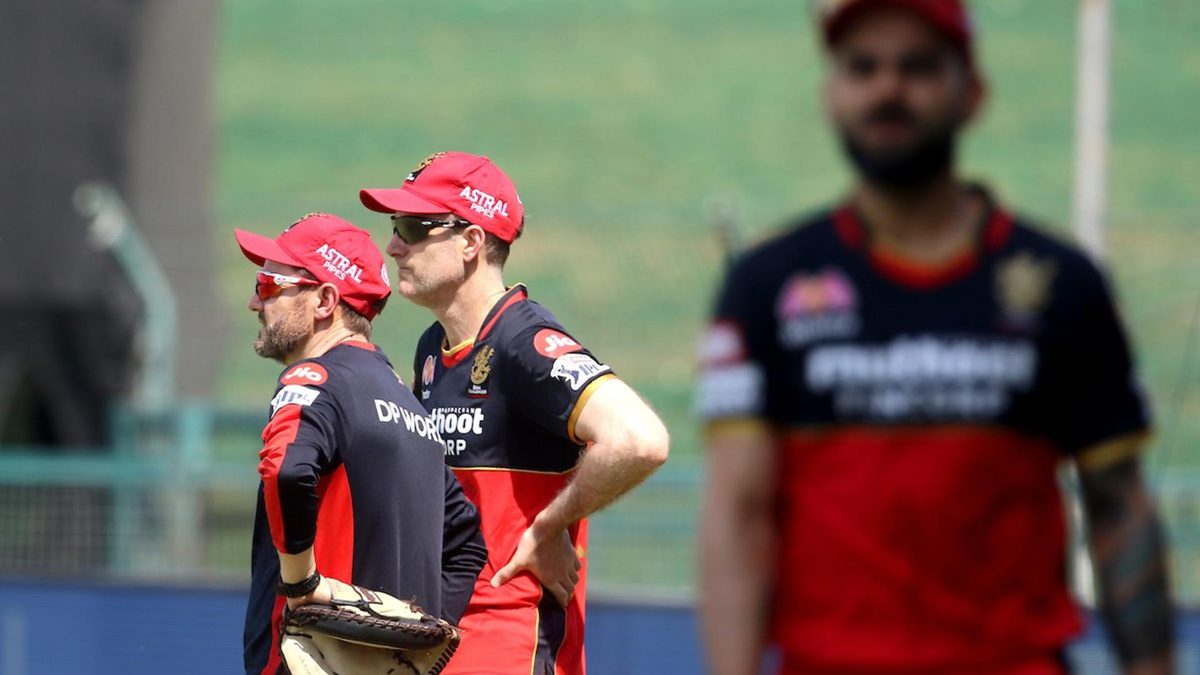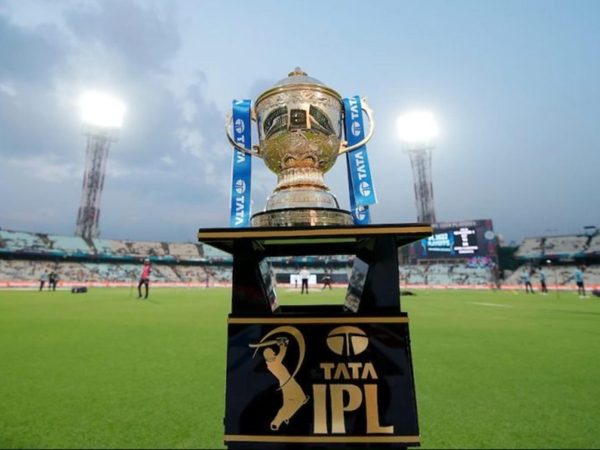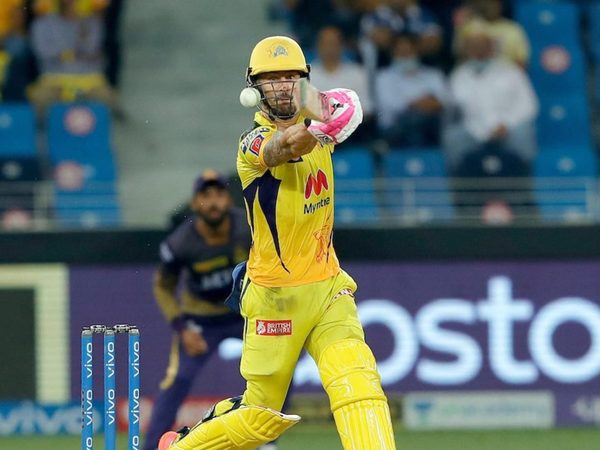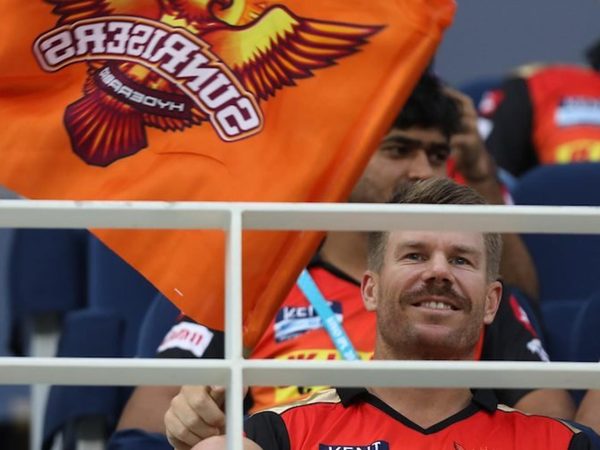
Usually known for their cast of international superstars, RCB have previously fallen short of finding the right balance in their squad. There now seems to be a greater focus on finding talent closer to home – and it’s working, writes Aadya Sharma.
Royal Challengers Bangalore are a team on a mission. Sitting in the top half of the IPL 2021 points table at the time of writing, they’re aggressively hunting for glory this year, while trying to bury demons of their troubled past. But it isn’t just their on-field brilliance that’s standing out – they’ve been doing their homework off it too.
At the helm of the team is the country’s captain, and sitting alongside Virat Kohli are two of the finest white-ball strikers going, AB de Villiers and Glenn Maxwell. But, as RCB have found throughout their history, a few global icons aren’t enough to win you a whole league, no matter how good they are. Carefully picking the rest of the roster is equally important – a long drawn-out process that consumes six to eight months every year for most IPL teams. It’s probably where you win half the battle.
For RCB, the planning begins “immediately after the IPL ends”.
“We have a post-season review,” Malolan Rangarajan, RCB’s head of scouting and fielding, tells Wisden India, detailing the specifics of RCB’s scouting system. “We try to find out where we have stood as a team and how we can improve.
“Post that, we try to identify areas and gaps that season and finally assign roles for each spot. We work backwards from there – once we are sure of the gaps and roles, we try to find the best available player in the domestic scouting, and the same thing is done for international players as well.”
***
Ahead of this season, RCB retained 12 players but also let go of 10, Among the 12 retained names, eight were Indian players and four remain uncapped. The thinking was clear – RCB needed enough depth to form a sound domestic core, an aspect which has been found wanting in the past.
In the last two years though, their Indian contingent has slowly stepped up: last season, 20-year-old opener Devdutt Padikkal, playing his first IPL, scored more runs than Kohli and de Villiers, ending as their leading run-getter. He could well follow the path of Yuzvendra Chahal, Navdeep Saini and KL Rahul (in white-ball cricket), whose performances for the franchise earned them national call-ups.
In IPL 2021, uncapped warhorse Harshal Patel, back at the franchise after four years away, has been a revelation after reinventing himself to top the tournament’s wicket-taking charts. Up-and-coming uncapped players like Shahbaz Ahmed and Rajat Patidar have been immediately pushed into the playing XI – both being tried at the coveted No.3 spot on different occasions – while others such as Pavan Deshpande, KS Bharat, Mohammad Azharuddeen and Suyash Prabhudessai are being nurtured for future roles. The results might not be immediate, but a long-term system is taking shape.
Scouting new players for this season was a more unusual process than usual: with Covid-19 suspending the sport all over, domestic cricket was barely functional. However, the BCCI’s decision to hold the Syed Mushtaq Ali Trophy before the auction saw a stream of young talent getting IPL contracts. Patidar and Azharuddeen, two star performers in the tournament, were promptly recruited by Kohli’s team, taking their overall domestic count to 14.
RCB’s scouting arm runs far, far down the ladder, identifying talented players from local leagues “who don’t come out in the open”.
“[Competitions like] KPL, TNPL, Syed Mushtaq Ali, Vijay Hazare Trophy – these are talents visible to all teams,” says Malolan. “What we try to do is – push the envelope a little further – we were out and about even for selection matches of states this year. There are a lot of cricketers who are actually talented, might be ready to play for IPL, but just because they don’t play for state [teams], they are not exposed.
“We were active for selection matches of each state team, so that was the point of difference. Apart from that, there are a lot of local leagues in each state – Tripunithura tournament in Kerala, JP Atray in Punjab, Hot Weather tournament in Delhi – we have people travelling through the year.”
To bolster their bowling depth, RCB have also put in place the Royal Challenge Playbold program, an all-India trial that allows undiscovered bowlers to join the RCB training camp and compete with the best.
“There are so many people who have gone astray because they weren’t able to pursue a career in cricket due to various reasons,” says Malolan. “We are looking for hidden gems – we have gone to the hinterland parts of the country where they are not exposed to cricket at all. In this process, if we are able to identify one, maybe two [bowlers], we’d be more than happy.
“There is something in the pipeline for batting as well.”
The scouting team reports to Mike Hesson, RCB’s director of cricket operations, working together not just for the future, but also to build an immediate squad that has multiple like-for-like backup options for each role.
Take wicketkeeping, for instance – behind first-choice de Villiers, RCB have three able options in Azharuddeen, KS Bharat and Finn Allen.
“If you have an injury or change in conditions, you don’t [want to] have to change the whole structure and that’s something we look to do in terms of balance,” Hesson tells Wisden India. “Playing on turning conditions is certainly an area where we wanted a number of options [for wicketkeeping]. Especially if you get the odd injury, making sure we have like-for-like replacements. Having some quality Indian keepers, [it was important] for us to find out a little more about them as well. Both Azharuddeen and KS Bharat are fine batsmen in their own right. Finn Allen is exploring his wicketkeeping options as well.”
While there’s ample depth this year, it’ll all likely change with the mega auction next season. RCB had the limitation at the back of their mind, but for them, this year’s auction was just a “stepping stone”.
“From a scouting point of view, we are completing our second year of a fully-actionable scouting plan,” says Hesson. “Just because the mega auction is next year, sure it’s going to play more importance, but this year was a stepping stone in terms of having our processes in place, so we are not missing out on any potential talent. But we are also picking out players with one, two, three years in mind that we want to focus on.”
A talented young cricketer isn’t necessarily a match-ready player. Players, once recruited but yet untested to face the pressure a usual IPL game throws at them, are put under the pump in training.
“We have a lot of open wickets where the stars get to see how talented actually are these new players are,” Hesson says, explaining the ongoing process of developing a team culture. “We challenge them against each other in a competitive environment where we can see the true talent. There’s batting and bowling in pairs [new players with established names]. Off the field, we work in groups of duos or trios – we pair them with the more established players so that they know them on and off the park.”
The fusion of a sound recruitment structure, blooming team culture and on-field excellence is bringing RCB closer to the team they want to be. Until they’re able to break past their title-less streak, doubts will continue to persist, but a confident Hesson insists on focusing on “what’s in front of us”.
“This current group is different than last year, as it was from last year. We can’t focus too much on history. We got to focus on what we can do in this year’s IPL and for RCB, and from a scouting perspective too, what we can do moving forward so that it gives a good chance.”








